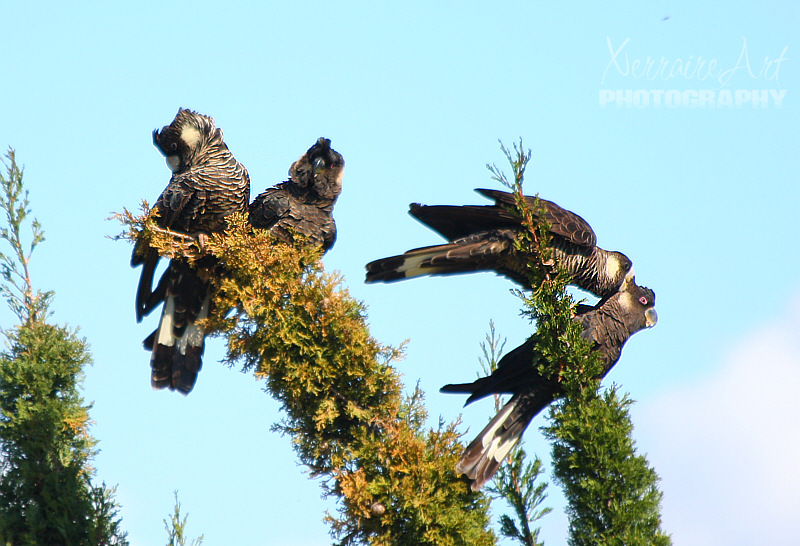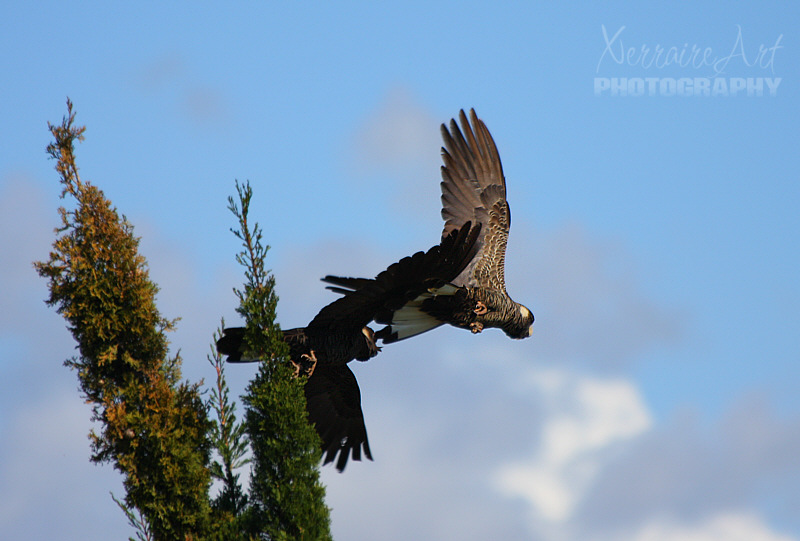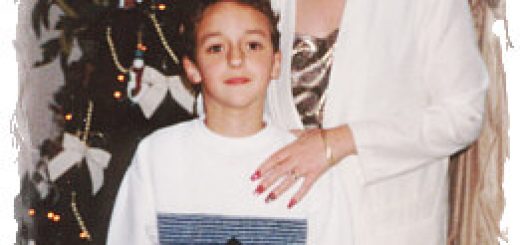Black Cockatoo
John gets excited to see black cockatoos, so when one came very close to me as I was taking out the trash, I figured I should get excited too. I was almost fearful, because it IS a very big bird and it was coming so close to me. I nearly ducked, then saw it go back up and perch on the wires above me, which really wasn’t that typical. Normally they go for the trees.

Then it stayed there. So I talked to it and it seemed to listen. So I put my hand up, and told it, “Stay there while I get my camera. And it did!”
This is not my usual luck with birds, I assure you.
Carnaby’s black-cockatoo – Calyptorhynchus latirostris
Carnaby’s black-cockatoos are found only in Western Australia and are one of only two species of white-tailed black-cockatoo found anywhere in the world. The other is Baudin’s black cockatoo. Both of these species are unique to southwest Australia. I think we see a few of them from time to time, but they are listed as endangered by both the Australian government and the Western Australian government.
There are a number of threats that have contributed to the decline in population numbers including habitat loss and competitive species. It is difficult to know how many are left, but it is known that their populations have declined by over 50 per cent in the past 45 years, and that they no longer breed in up to a third of their former breeding sites in the Wheatbelt. Extensive clearing of native bush in the Wheatbelt has led to a severe reduction in available nesting and feeding trees. In some cases, nesting and feeding areas are too far apart for the birds to successfully raise chicks. The original food sources for Carnaby’s black-cockatoos on the Swan Coastal Plain have been largely replaced by urban development and introduced pine plantations that form a new food source for cockatoos. However these plantations will be removed in the future, posing additional conservation problems.

Carnaby’s black-cockatoo can live for 40 to 50 years in the wild and display strong bonds with their partners throughout their adult life.

Sadly it was time for them to move on. Up to 12km is a reasonable distance for cockatoos to fly from the hollow in search of food and they are assisted in their navigation between sites by corridors or patches of vegetation. If feeding sites and nesting trees are too far apart the male cockatoo is unable to adequately feed the female and growing chick. In this case the breeding attempt may fail or the chick will be underweight when it leaves the nest and less likely to survive. Carnaby’s black-cockatoo has been known to go locally extinct in areas where food sources are too far away from the nesting hollows.
















